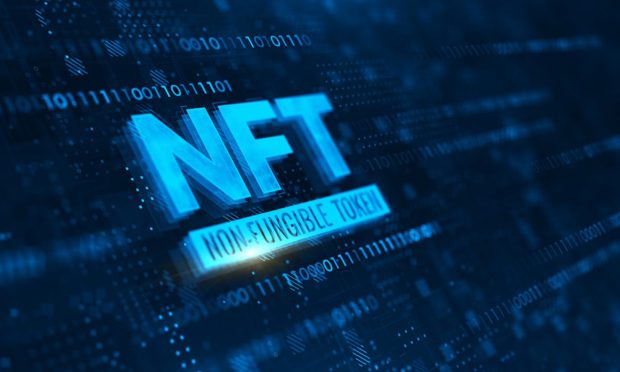Retailers Pin Hopes on NFTs as Impulse Play

Nonfungible tokens – NFTs – are complicated, to put it lightly. For many consumers and retailers alike, they’re hard to explain, hard to conceptualize, and hard to understand why there is demand is for them. In the meantime, there’s an emerging, fast-growing buzz around them, influential celebs like Paris Hilton hopping on the NFT train, and a segment of the population who is both fascinated by them and shelling out good money for them.
Retailers remain interested as a result.
Read more: NFTs Show Strong Growth in Retail Segment for 2021
Most NFT purchases over the first ten months of 2021 were under $10,000, as PYMNTS reported. From the start of 2021 until October, over $27 billion in cryptocurrency was spent on Ethereum contracts tied to NFTs. Yet, NFT purchases involving valued cryptocurrency-made purchases ranging between $10,000 and $100,000 account for nearly a quarter — 20% — of NFT transactions, and this number continues to go up.
Over in the art world, NFTs won big this year, with consumers paying $65 million for NFTs at Sotheby’s and $100 million at Christie’s in 2021, PYMNTS said.
Retailers Try a New NFT Strategy
Here’s something interesting retailers should be thinking about now. Some retailers are offering consumers the option of adding an NFT to their order when they’re about to make a purchase.
The bottom line is that retailers are competing for consumer interest and want to offer unique offerings that draw consumers in. The option of presenting consumers with a bundled NFT purchase is certainly different at this time when NFTs are young.
Consider, for instance, stores like Wearable NFT Art. Here, you can purchase on their site a limited-edition designer shirt and the original NFT crypto artwork all at once. Both items come with a certificate of authenticity. The site presents this option as an investment opportunity at a great deal. Users can scan the QR code located on their shirts to see their NFT online. The site has a limited amount of clothing options available. Users have the option to sell their NFTs when they choose.
“Be one of the first in the World to wear NFT Art. No joke! NFT’s are THAT new,” the website reads.
The question remains, however: To what extent will this attract consumers?
Greater Implications
The answer isn’t yet known, but perhaps it’s only a matter of time before consumers can purchase an NFT and receive physical goods together. The bottom line is, it’s complicated.
It’s perhaps likely retailers wanting to get on the NFT bandwagon without quite understanding it must just go with putting a QR in the box along with a product and hope for the best. And then leave the rest up to the consumer. This way, the retailer will absorb the price of the item in the cost of the good.
Adding to the complexity of all this, of course, is that Ethereum prices seem to change completely depending on how fast you blink.
In the meantime, big retailers are starting to use NFTs as a promotion tool.
“Most of the world knows about NFTs because of their association with cryptocurrency, but their impact on the world and how we do business will extend far beyond that,” said Mnemonic, a platform featuring live NFT collections.
AMC Theaters, for instance, offered 86,000 limited-edited NFTs when promoting a Spider-Man film, as PYMNTS reported. Also getting into the NFT space is Nike, who’s partnered with RTFKT, an NFT and fashion startup. Or, consider how Shopify Plus and GigLabs now sell NFTs together. Or Adidas Originals, who announced earlier this month an NFT line launch.
In the meantime, the price range for a MetaBirkin NFT (an exclusive line of Birkin handbags from Artist Mason Rothchild that involves a collection of 100 different NFTs) is up to $400,000. As PYMNTS reported, these bags are now being pirated and sold online.
Key Takeaway
What’s the best way to sum this all up? Well, in the words of PYMNTS, “NFTs are setting the world on fire and the sector is still in its infancy.”
Just because something is young and perhaps complicated to understand doesn’t mean it should be dismissed. Some retailers, of course, are in on NFTS, get what they’re about, and understand how to leverage them. Yes, investors poured $30 billion into crypto firms this year. On that note, retailers that want to remain competitive must truly keep an eye on NFTs and get ready to act on related opportunities.
